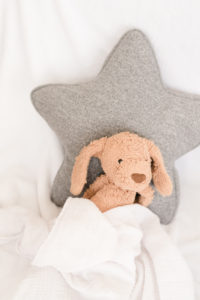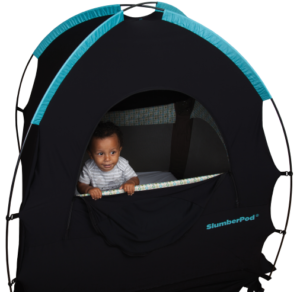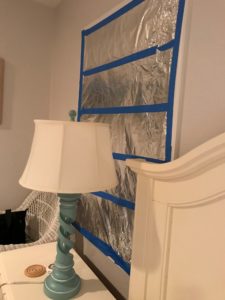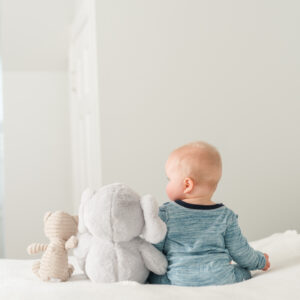I’ve known people who have canceled travel plans because their child’s sleep is such a challenge and they don’t want to risk it getting worse. Or they go on vacation and are miserable the whole time because no one gets any sleep.
Does this sound familiar?
When I hear people get anxious about traveling with kids or considering canceling their travel plans because they’re nervous sleep will just be a nightmare, or they don’t want to mess up their child’s sleep, I have lots of feelings.
One, I get it; I’ve been there! Although we never canceled our travel plans, I certainly worried about what sleep would look like and we had our fair share of rough nights and naps when away.
Another feeling is a kind of sadness. We’re not supposed to feel like prisoners to our kids or their sleep schedules! Yes, sleep is important and they need to sleep – please don’t be gone all day every day and make them nap whenever they can squeeze it in. But have off days because of that birthday party or play date or movie in the park. Have off weeks because traveling is fun and good for all of us!
Our goal at Via Graces is to help families get the best sleep possible. And that’s at home and while away.
We can’t promise that just because your baby or toddler is an amazing sleeper at home they’ll be an amazing sleeper while away. It will hopefully be smooth, but they’re a human! And some humans have a harder time adjusting to new places. I can sleep pretty much anywhere, no problem, but my husband has a tougher time sleeping the first night or two somewhere new.

But we can help give you tools to use while you’re traveling to help keep sleep solid, and we can also make sure you have the tools to use when you get home if you need to get back on track.
So please don’t let your little one’s sleep be the killjoy of your entire trip or the reason you don’t go!
In this post, I will share our top tips for traveling with babies, toddlers, and young kids, including:
- How you can help your child sleep before traveling
- How to keep your little one’s sleep environment as “same” as possible when traveling
- What items to bring from home to ensure your child gets the best sleep possible
- How to balance making time for naps and adventures while on vacation
- How to adjust your child’s bedtime when traveling
- How to help your little one adjust back home when you return from vacation
And so much more!
If you have time to sleep train before traveling…
Before I dive into any tips specific to traveling with kids, I first want to say that sleep-trained babies and toddlers generally sleep better when away from home than non-sleep-trained babies and toddlers. This is not true for all children, but think about it…
Sleeping in a new place is different and hard! And when sleep is already hard, you’ve got two hard things against you – sleep and a new place. “What is this place where Dad is rocking me? It doesn’t look normal.” “This isn’t my crib!” “Mom is next to me, but this bed feels different than her bed at home.”
When sleep, however, is the easy part – when seamless sleep is the norm – yes, that new place is strange, this room is weird, that’s not my bed, but we’ve got the sleep part down.
So I am not saying that just because you’ve sleep trained, sleep is going to be perfect when you’re traveling or away from home. Our kids are real human beings, not robots!
But I will say that I have found that babies and kids who are already confident and independent sleepers at home often do better when sleeping in a new place.
So if you’ve been considering sleep training and you have any trips coming up soon, this might be the time to do it to help the trip go a little more smoothly! With babies 4-17 months old, our sleep plans are two weeks long, and for toddlers and older kids 18 months and older, our plans are three weeks long. So if you have those 2 – 3 weeks (or more) before traveling, consider sleep training now so you have a better chance of sleep while you’re away!
And if you don’t have time before your trip, that’s okay. You can always sleep train when you get home if you’d like. Or if you sleep train and then head out on vacation and sleep goes awry, you can get right back on track once you’re home.
Keep Your Child’s Sleep Environment Consistent While Traveling
When it comes to traveling with kids, we want to try to keep things as “same” as possible. And that starts with their sleeping environment!
Total Darkness
Just like we want your little one’s room to be totally dark at home, we want it to be as dark as possible when you travel!
One of our all-time favorite baby and toddler sleep products is the SlumberPod, and it’s especially helpful when traveling. It’s a little blackout pod that can fit over a mini-crib, a pack ‘n play, and several toddler cots. It’s not only instant blackout, but it’s almost like it’s own little “room” – so if you’re all in a hotel room together, or siblings are room sharing, it’s a great way to feel like there’s some sort of boundary there.

Using a SlumberPod (or two!) in a hotel room has allowed us to still have a light on so my husband and I can read before bed, or watch a show on our computer with headphones in. We’ve even packed up our hotel room while one of our girls napped right there in their SlumberPod!
[Notes that you can use the code “VIAGRACESPOD” for a discount on your SlumberPod!]
If you don’t have a SlumberPod, or your child will be sleeping in a standard-sized crib or a big bed, there are other options blackout options when traveling. A sleep consultant vacation hack is bringing some foil and painter’s tape to cover any windows in your child’s room.

Gro-Anywhere Blinds are another great option; they’re blackout blinds that you can suction cup to a window. It’s not complete darkness and you might have to bring multiple panels if there are multiple windows, which can be frustrating. But these are what we now use with our 4 and 6-year-old when we travel and they do great!
I’ve also been known to turn a walk-in closet or spare bathroom into our nursery-away-from home, because total darkness really makes a difference!
White Noise
Along with making your child’s sleep space dark when traveling, we also want your little one to have white noise like they do at home. So bring their sound machine to help this new space feel more familiar!
There’s also a good chance there will be new or unfamiliar sounds in your accommodations, and the white noise will help drown out those sounds.
Finally, if you’re vacationing with other people or you’re staying at a family member’s house, having white noise will allow you to continue hanging out after bedtime or during nap time and not worry about waking your kids up.
Bring familiar items from home when on vacation
Helping your little ones’ sleep space while traveling feel similar to when you’re at home helps them feel more safe and secure. So if you’re traveling with a newborn, baby, or toddler who wears a swaddle or sleep sack for naps and overnight, don’t forget them!
Similarly, if your child is 12 months or older and sleeps with some sort of lovey or comfort item, make sure you pack it!

If your toddler sleeps with a pillow or blanket, make sure you bring those along, too. I even bring a stack of my girls’ favorite bedtime books when we go away, to help them feel more at home!
Finally, for toddlers and older kids who use a toddler clock, don’t forget to bring that along, as well! It’s important for your child to recognize that the same boundaries you have around sleep at home are the same expectations you have while traveling.
We have all of these sleep items, and more, listed in a free travel packing list, to make sure you don’t forget anything when you’re packing!
Continue the same nap and bedtime routines when you travel
Adjusting to a new space can be tough enough for little ones, so support your child by following the same nap and bedtime routines you would at home. Not only do these routines help alert your child’s mind that sleep is coming, but at night, that routine is also helping to signal that natural melatonin release.

It’s easy to want to skip a story or rush through getting jammies on because you’re running a bit later for bedtime. But your little one needs that space to transition to sleep time, and doing these routines in their new sleep space will help them register what’s going on!
And if you’ll be in the car when you’d normally be doing the bedtime routine?
Do part of the routine in the car! You can put your little one in their jammies before you leave the restaurant, read a few books in the car, and then sing a song once you’re “home” and lay them down.
Spend time in your child’s new sleep space when traveling
For older babies, toddlers, and older kids who are very aware of this new environment, try to spend some time where they’ll be sleeping before their first sleep, if at all possible. If not the first day, try to make a point of it the next.
Aside from doing the nap and bedtime routines in their new room, get them dressed in that room, read some stories, look out the new windows, say hi to their bed, etc., so when it’s time for sleep, there’s not as much extra distraction because the environment is already somewhat familiar.
With older kids, it’s also helpful to show them where you’ll be sleeping and to remind them that you can hear them on the monitor, or you will check on them before you go to bed, so they have an extra sense of security while sleeping in this temporary space.
Make time for naps when traveling
In a perfect world, your baby or toddler would keep taking all of their wonderful naps, in their crib, just like at home, while you’re traveling. Unless you’re at grandma’s house for the week, however, this is probably not happening. And that’s okay!
My general rule of thumb while away is to try to have at least one nap at your “home away from home” whenever possible. So if your baby takes 3-4 naps a day, maybe that’s just the morning nap in their crib. If they take two naps a day, that would be the morning or afternoon nap at home. And if they just take one nap a day, it’s ideal to have the nap at home.
Naps on the go will absolutely happen, but they likely won’t be as long or as restorative as those in an independent sleep space. So trying to make space for more independent naps will help avoid a big build-up of overtiredness throughout your vacation.
There will also be trips, however, where even that one nap a day at home just isn’t possible. For those quicker trips, just roll with it! But if you’ll be gone for a whole week (or longer!), try to find some nap at home time for a couple of those days.
If you will be out and about during your child’s usual nap time, make sure you have your stroller or carrier so they can sleep, or plan one of your drives (or boat rides!) for nap time. That on-the-go nap may not be super long and they may fall asleep way sooner or way later than usual, but it is still helpful.
We have a travel guide that has an in-depth section when it comes to nap time and how to balance naps, what to do with short naps, and it even has some if/then scenarios that might come up with weird naps and just throw you off. And we want you to feel confident navigating sleep, even while away!
With all of this, we’re really just trying to avoid the overtiredness that will quickly settle in, making any more sleep that night harder. And it’s way too easy for that overtiredness to build up over vacation.
Try to keep a consistent bedtime when traveling, adjusting it when necessary
Our general rule of thumb with your child’s bedtime when traveling is to try to honor their body clock by sticking within about an hour of their usual bedtime.
So if you have a baby who is still following an awake window schedule, base bedtime on those awake windows, just as you would at home.
Similarly, if your baby or toddler is following more of a set schedule and they usually go to bed at 7, try to stick close to that 7 pm bedtime, knowing it may even go as late as 8!
Or you may have to do an early bedtime!
If your toddler missed their only nap of the day, or your baby missed their last nap, or they had three micro naps during the day, do an early bedtime! We’ve put our girls to bed around 6/6:30 on those off days and it is so necessary.
Rather than seeing an early bedtime as a sure way to get an early morning, consider it making up for lost nap time! Most kids just tag that missed sleep right onto their total overnight sleep and still wake up around their normal time in the morning.
And I know, an early bedtime on vacation feels like a bummer, but we have to find some sort of balance. If you’ll be out and about all day, try to get home in time for bed! Or if you really want to see the fireworks that night, have a slower day or at least carve out some nap time at home so it’s not so much of a stretch for your little one to stay out later than usual.
Oppositely, if your child doesn’t usually take naps but happens to fall asleep while adventuring, or your child squeezes in an extra nap, remember that you’ll likely need to push bedtime back. We want to make sure your child has enough sleep pressure to really be able to fall asleep at bedtime, and an unexpected or extra nap can make it much more challenging to fall asleep “on time.”
How to help your child re-adjust when you get back home…
No matter how you structure your days while traveling or on vacation, your child’s sleep will likely not be perfect. Whatever it looked like, we always suggest the first few days back home be slower-paced, all naps in the crib and bedtime on time, getting back into routines.
If your little one is running on any sort of sleep debt, those first few slow days at home will help them make up for it.
If for whatever reason, your child’s sleep got totally thrown off while away – maybe they ended up in bed with you when they usually sleep on their own, or you had to rock them to sleep when they usually put themselves to sleep, or you had to hold their hand while they fell asleep when you can usually say goodnight and walk away – you can get back on track! Their sleep is not ruined forever!
Think back to the sleep training methods you used before and either do a sped-up version of that plan or go back to square one. Your child had those sleep skills before and they can absolutely get them back; consistency is key, and now that you’re back home you can get there again!
Remember we have a free packing list as well as a comprehensive travel sleep guide! (The packing list actually comes straight out of the guide.) The travel guide has all of this info plus so much more. Tips for plane travel, car travel, hotel stays, time zone changes, what to do when sleep is hard etc, to help you feel confident traveling with your kids.
Conclusion
My goal in this post is not to make you so focused on sleep and schedules that you miss out on vacation. Sleep will likely be off to some extent, and that’s okay!
My goal is to help you figure out how to get the best of both worlds – sleep and adventures – because sleep is also so important and no one is their best self when running on little sleep.
So make all the memories as you travel, and feel prepared to handle all things sleep, no matter what is thrown your way.
And remember that no matter how awesome or how rough your child’s sleep is, vacation will soon be over, the traveling will eventually come to an end, you will be back home, and can get sleep back on track. Your child’s sleep won’t be ruined forever!
With Grace,
Lauren
